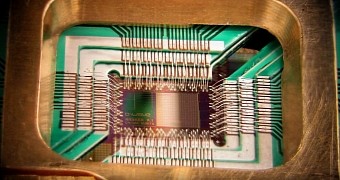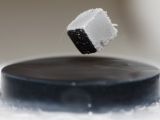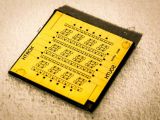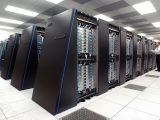The best supercomputer at present is the Tianhe-2, stationed in China and featuring a performance of 33.86 PetaFLOPS, or 33.86 quadrillion floating point operations per second. The US Government is working on one that is almost thirty times faster than it.
If we were to look at the top handful of supercomputers on the Top500 list, the average peak performance is of around 25 PetaFLOPS. That means that an Exaflop-capable system would be forty times better.
That is the goal of IARPA, the Intelligence Advanced Research Projects Activity, which is the Research & Development wing of the US government that focuses on creating ways to improve the performance of organizations like the CIA and NSA.
In other words, it's akin to DARPA (Defense Advanced Research Projects Agency), only a lot more secretive, and possibly, benefiting from greater investments.
Exascale supercomputer will use superconductors and cryogenic memory
For a high-performance computer (HPC) to be considered an exascale system, it needs to be able to process at least 1 exaflop per second, which is 1,000 PetaFLOPS.
Obviously, this is not possible with current technologies, or someone would have created such a thing by this point.
IARPA has been favoring social engineering, neuromorphic computing (trying to emulate how the brain works) and parsing big data (to find small clues in huge volumes of data).
The upcoming supercomputer may apply some of these principles, but we can only speculate on the implementations as far as those concepts are concerned.
What did get somewhat fully explained were the plans revolving around superconductors and cryogenic memory.
IARPA, in collaboration with IBM, Raytheon and Northrop, will investigate and use Josephson junctions, copper wires cooled to near absolute zero (-273 Celsius / -459 Fahrenheit), at which point an electrical current will flow along the wire indefinitely, without having to apply voltage.
Putting a semiconductor in the middle of such a wire (single-flux quantum logic approach, SFQ for short), the Josephson effect can create a very low power switch.
Cryogenic memory only makes sense in this situation, as it would operate in close enough proximity to the superconductive CPU that the temperature will have to be close to absolute zero as well.
The C3 program will have to create the cryogenic memory first though. IARPA hasn't quite gotten to the point where it can show off any practical applications.
In the meantime, years will pass with HPCs showing increasing PetaFLOP-level performance. IBM and NVIDIA will create a 150-PetaFLOP system first, for the US Department of Energy.
Proof-of-concept superconducting logic and memory inbound
They will need to be developed and proven viable before IARPA's exascale computer becomes reality. Unfortunately, we don't know when we can expect results.
At least we have a vague idea what is in store for us all, even if it's just intelligence agencies that will use the resources: switching speed of 770 GHz and power consumption of just 200 kilowatts for every 100 PetaFLOPS – several orders of magnitude more efficient than the CMOS-based supercomputers used today.

 14 DAY TRIAL //
14 DAY TRIAL // 


